Open source mesh network for the smart city
- Details
- Hits: 8585
Interoperability is essential for the development of Smart Cities vital. Paradox engineering, Member of Minebea Mitsumi Gruppe, has dealt intensively with the question of why cities today should focus on openness and say goodbye to proprietary data formats and technologies. The solution is open source Mesh network. Paradox and Minebea are working on this together with the UCIFI.

Contents
- Interoperable urban infrastructures
- Uniform data models for open cities
- Mesh network as the next step
Interoperable urban infrastructures
Make cities and utilities an interoperable one urban infrastructure When attacking, they usually consider existing international Internet of Things (IoT) connectivity standards such as Lorawan, NB-IoT or Wi-SUN. Even if that's not a bad approach, you should be aware of this technology that these standards only cover the network layer and the message protocol of the respective IoT solution. Nor do they offer a specific data model or application payload for use in cities.
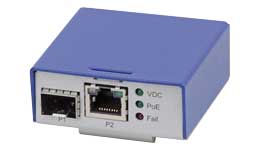 Robust Ethernet media converters with low latency
Robust Ethernet media converters with low latency
As a result, providers of the solution usually access protected application levels or proprietary data models back. This means that the customer is bound to their technology and often expensive API integrations.
For Paradox Engineering and Minebea Mitsumi, that was one of the main reasons for the UCIFI Alliance to join. Paradox has always worked on open standards. The company has set itself the goal of developing multi-supplier solutions for intelligent environments and cities.
What does UCIFI do?
The UCIFI Alliance provides the missing piece in the Smart city interoperability. It is an Internet of Things alliance that includes companies, cities and utilities. They all deal with the development, promotion and certification of the open, uniform data model UCIFI for smart city devices and the UCIFI mesh implementation.
 Hyperloop comes to Munich at the speed of sound
Hyperloop comes to Munich at the speed of sound
The UCIFI uses and extends existing standards such as the LWM2M. It also offers a Open source implementation the uniform data model for cellular and Lorawan protocols, which standardize the physical layer and the messaging protocol, but which do not specify the data model for smart city devices. In addition, the UCIFI open source Smart City Stack on the Wi-SUN (6Lowpan) Mesh offers complete interoperability for all Smart City devices. A vendor connection and expensive proprietary API integrations are prevented.
Uniform data models for open cities
Today Paradox Engineering leads the UCIFI technical working group. With his cooperation, that was already possible first unified data model for cities and utilities to be published. This is an important step forward in ensuring a complete interoperability between different IoT devices within a network. With a common data model, connected devices from one manufacturer can be replaced by equivalent devices from other manufacturers without having to integrate software.
 smart city | Mega buildings, infrastructure, products + technologies
smart city | Mega buildings, infrastructure, products + technologies
The UCIFI data model uses the Light weight M2M (LWM2M) Registration of the Open Mobile Alliance to describe intelligent end devices (reference objects) and their attributes (resources). This enables the potential of open cities to be developed sustainably at reduced costs.
Paradox's IoT solution has the interoperability tests for the LWM2M implementation Successfully passed during the OMW Virtual Testfest 2021. The UCIFI data model makes it easier for suppliers to implement them on their devices. This enables them to become Talq compliant and receive the relevant certifications.
Mesh network as the next step
Now the next step is to implement one Open source mesh network. Paradox are working on this Engineering together with the UCIFI Alliance. The mission is now to create an open source for mesh networks and to define and provide a reference implementation. This is intended to standardize the Smart City application levels on all 6Lowpan/Wi-SUN certified mesh networks.
A Smart City application is always specific and provides individual requirements: These include:
- bandwidth
- Accessibility of the devices
- OPERATION
- Communication between the end devices in outdoor areas.
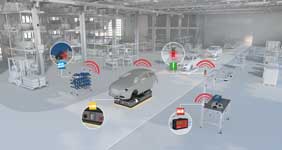 Energy-efficient radio network for the Industry 4.0 factory
Energy-efficient radio network for the Industry 4.0 factory
Such services are currently only implemented within proprietary solutions on the market. The goal of the UCIFI is now to standardize the Smart City application level on the basis of 6Lowpan / Wi-SUN networks and to define the protocol. The processes that are to be used for commissioning devices and networks, for end-to-end security and for device communication must also be defined. This becomes a full end-to-end interoperability guaranteed.
General technical knowledge
Mesh means: interlocking or meshing. In the field of Communication technology is that there? Mesh network. The network is connected. From every network node there is a path to every other node. The information is passed on from node to node until it reaches the destination. The performance of the mesh network is much higher in contrast to e.g. B. to a Wi-Fi range extender that "only" duplicates the existing Wi-Fi signal, which comes at the expense of speed (half-duplex). For several connected WiFi devices such as smart home components, different WiFi sources (access points) can be used in a home instead of the WiFi router, all of which have the same fast performance. The result of the mesh network is better reception across the board. The larger the building, the more access points are required for the mesh WLAN system. These access points are connected to each other via a wireless network. As long as they are within range (mesh area), they communicate wirelessly without a switch or WLAN Router commonality. Efficient data routing with mesh technology can also be implemented with wired connections.
to the Minebea Mitsumi Newsroom
You might also be interested in...

Artificial Intelligence | trends and developments

smart city | Mega buildings, infrastructure, technologies
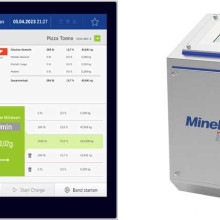
Load cell, weighing electronics, industrial scales from Minebea Intec

MinebeaMitsumi | Precision as a drive
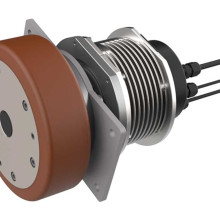
Integrated wheel hub motor for driverless transport systems
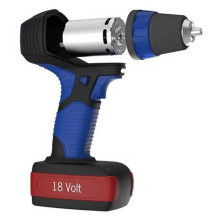
BLDC motor for smooth running and long runtime

Nicola Crespi is Chief Innovation Officer at Paradox Engineering.
